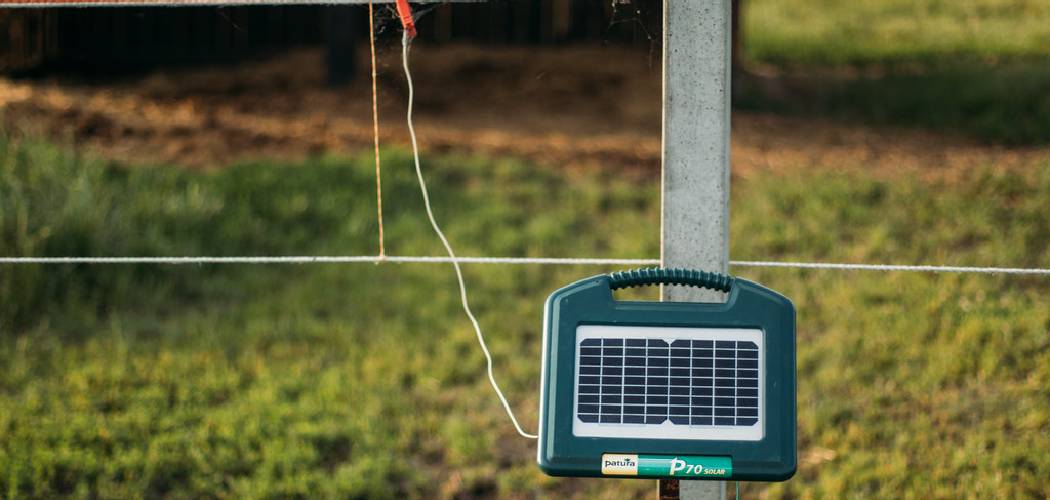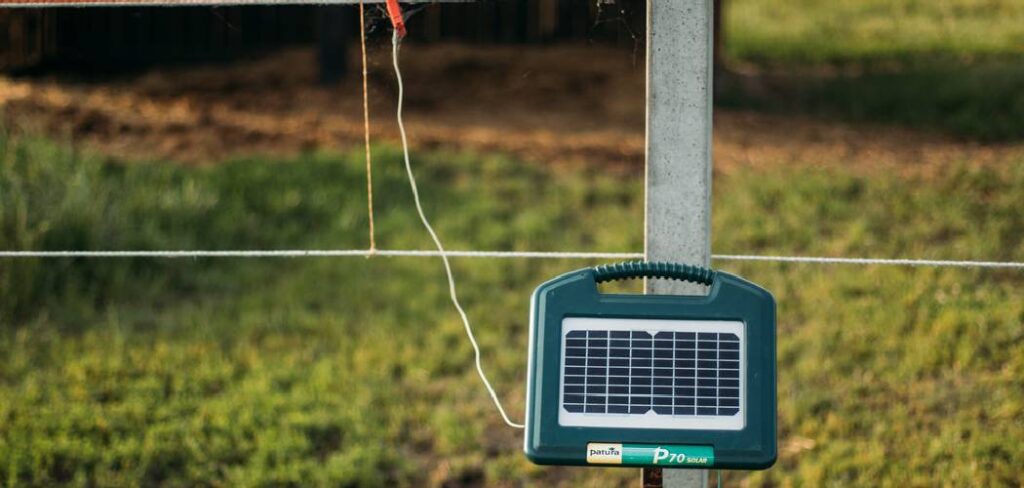
Are you wondering if electric fencing is the right choice to contain your horses? With its portable design and easy installation process, an electric fence can be a great option for keeping your horse secure. Whether you are looking to create an enclosure around your pasture or simply keep it from escaping its current paddock, installing an electric fence could be the perfect solution to maintain control while providing a safe space for your beloved animals.
In this blog post, we will provide you with step-by-step instructions on how to install electric fence for horses so that you can rest assured knowing that every precaution has been taken!
Supplies You Will Need to Install Electric Fence for Horses
1. Electric fence tape or wire
2. Posts (wood, fiberglass, or metal)
3. Insulators for the posts
4. Charger/energizer unit
5. Grounding rod and clamp
6. Warning signs (optional but recommended)
Step-by-step Guidelines on How to Install Electric Fence for Horses
Step 1: Determine the Area for Installation
The first step is to assess the area where you want to install your electric horse fence. Consider the size of your horses, their behavior, and their needs when selecting the location. It’s essential to choose a flat and dry spot that does not have any standing water or dampness as this could interfere with the electrical current. This will also ensure that the fence is in good condition and functioning correctly.
Step 2: Prepare Your Posts
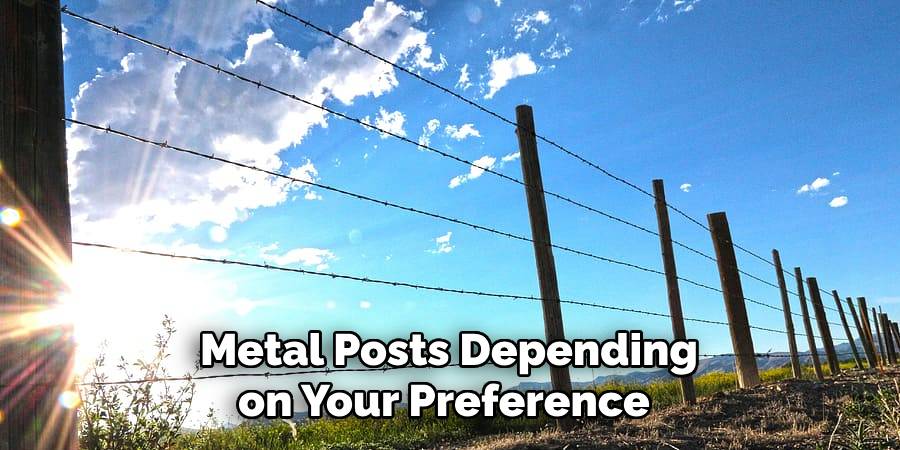
Once you have selected the area, it’s time to prepare your posts. You can choose from wood, fiberglass, or metal posts depending on your preference and budget. Make sure the posts are strong enough to withstand any pressure from your horses and tall enough (around 4-5 feet) to prevent them from jumping over. Attach the insulators onto the posts, which will hold your electric fence tape or wire in place.
Step 3: Install Your Charger/Energizer Unit
The charger/energizer unit is the most crucial component of your electric horse fence as it provides the electrical current needed to keep your horses contained. Install the unit as per the manufacturer’s instructions, making sure that it is properly grounded and protected from the elements.
Step 4: Set Up Your Grounding Rod
To ensure an effective electric current, you will need to install a grounding rod around 3 feet deep into the ground near your charger/energizer unit. Use a clamp to attach the grounding rod to the unit. Make sure it is properly installed and secure to avoid any issues with the electrical current. If you are unsure about the grounding process, seek help from a professional.
Step 5: Install Your Electric Fence Tape or Wire
Using your posts as guidelines, run the electric fence tape or wire around the perimeter of your desired area. Make sure that it is pulled tightly and secured in place with insulators. You can use additional posts in corners or areas where there may be a gap to ensure proper coverage. While installing the fencing material, make sure that it is not touching any other objects such as trees or buildings.
Step 6: Test Your Fence
Once all the components are in place, it’s time to test your electric horse fence. Follow the instructions provided by the manufacturer to ensure that everything is working correctly and that there are no gaps or breaks in the electrical current. It’s essential to do this before introducing your horses to the area.
Step 7: Add Warning Signs (Optional but Recommended)
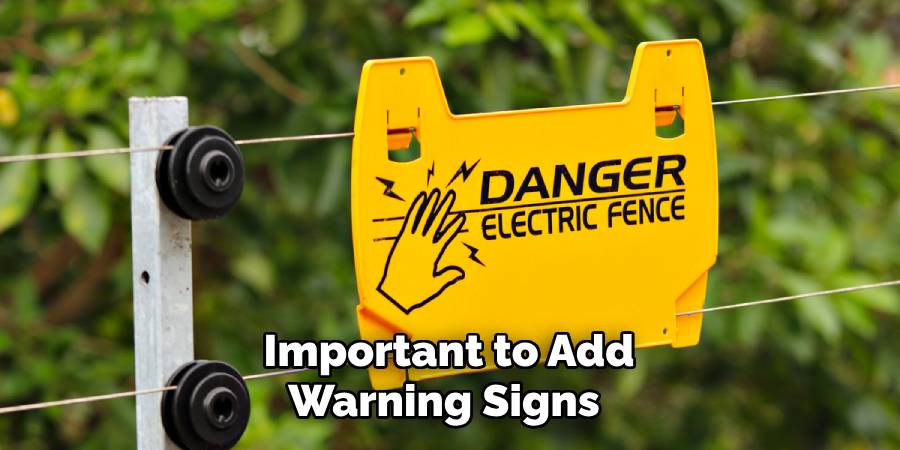
While electric fences are generally safe, it’s important to add warning signs around the perimeter to alert anyone who may come into contact with the fence. This is especially crucial if there are children or inexperienced individuals on your property who may not be familiar with electric fencing. If possible, add warning signs in multiple languages to ensure that everyone is aware of the potential hazard.
Following these steps, you can easily install an electric fence for horses and provide a safe and secure space for your beloved animals. Remember to regularly check the fence for any damages or issues and consult with a professional if needed. With proper maintenance and care, your electric horse fence will last for years to come! Happy fencing!
Additional Tips and Tricks to Install Electric Fence for Horses
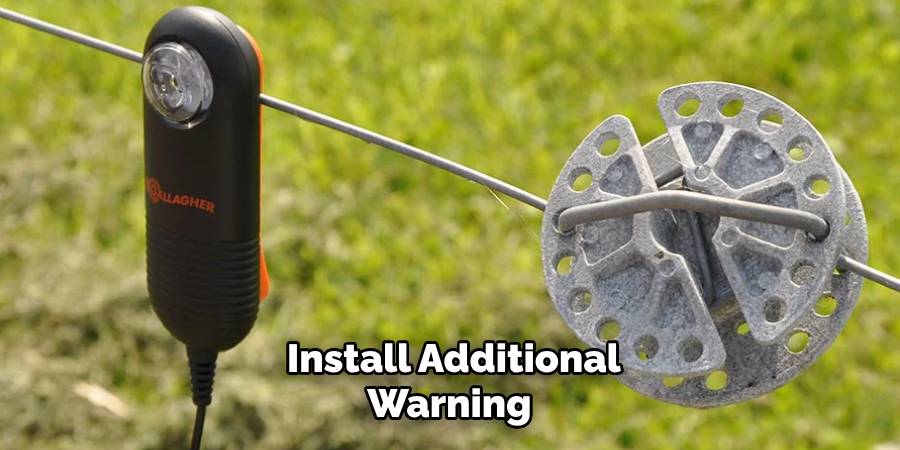
1. Make sure to test the strength of your electric fence before introducing your horse to it. You can use a voltmeter or a voltage tester specifically designed for electric fences.
2. Consider adding warning signs around the perimeter of your electric fence to alert people about the potential shock hazard.
3. If you have more than one horse, make sure to separate them with a safe, non-electrified barrier such as a wooden fence in case they accidentally get shocked by the electric fence.
4. Always keep your electric fence energized and properly maintained. Check for any physical damage or vegetation growth that may interfere with its functionality.
5. Periodically check the grounding system of your electric fence to ensure it is properly connected and functioning as intended.
6. Train your horse to respect the electric fence by introducing them gradually and using positive reinforcement techniques.
7. Consider installing a backup battery or solar-powered charger for your electric fence in case of power outages.
8. If possible, install additional warning devices such as flashing lights or audible alarms to alert horses and other animals of the electric fence.
9. When using temporary electric fences, make sure to properly secure and insulate all connections to avoid accidental shocks or power loss.
10. Consult with your veterinarian before installing an electric fence for your horse, as some horses may have health conditions that make them more sensitive to electric shocks.
11. Always follow manufacturer instructions and local regulations when installing an electric fence for horses. Improper installation or use can result in safety hazards for both horses and humans.
12. Remember to regularly check your electric fence and make any necessary adjustments or repairs as needed to ensure the safety of your horse and other animals.
Following these tips and tricks can help ensure the successful installation and use of an electric fence for horses. Remember to always prioritize safety, both for your horse and for yourself, when working with electric fences.
So, if you are considering installing an electric fence for your horse, make sure to do thorough research and consult with professionals to ensure that it is installed correctly and safely. With proper maintenance and precautions, an electric fence can provide a reliable and effective way to contain your horse while also keeping them safe from potential dangers in their surroundings. Happy fencing!
Frequently Asked Questions
How Does an Electric Fence Work?
Electric fences use a mild shock to discourage animals from crossing the boundary. The shock is not harmful but rather serves as a deterrent to keep horses contained within their designated area. When a horse touches the electric wire or tape, it completes an electrical circuit, and the horse will receive a short, sharp shock. This experience will teach the horse to stay away from the fence in the future.
What are the Benefits of Installing an Electric Fence for Horses?
There are several benefits to installing an electric fence for horses. The first and most obvious benefit is that it keeps horses contained within a designated area, preventing them from wandering off or getting into areas they should not be in. Additionally, electric fences are more cost-effective than traditional fencing methods, such as wooden fences.
They require minimal maintenance and can last for many years with proper installation and upkeep. Electric fences are also more visually appealing, as they do not obstruct the view of the surrounding landscape.
Is an Electric Fence Safe for Horses?
Yes, when installed correctly and used according to instructions, electric fences are safe for horses. The level of shock delivered by the fence is not harmful but rather serves as a deterrent. However, it is essential to regularly check the fence for any damage or malfunctions and maintain proper voltage levels to ensure the safety of your horses.
How Do I Install an Electric Fence for Horses?
Installing an electric fence for horses involves several steps, including choosing the right materials, determining the appropriate layout and design, grounding the fence, and connecting it to a power source.
It is crucial to follow the manufacturer’s instructions carefully and consult with an experienced electric fence installer if needed. It is also essential to regularly check the fence for any damage or malfunctions and make repairs as needed.
Can I Use an Electric Fence for Other Types of Livestock?
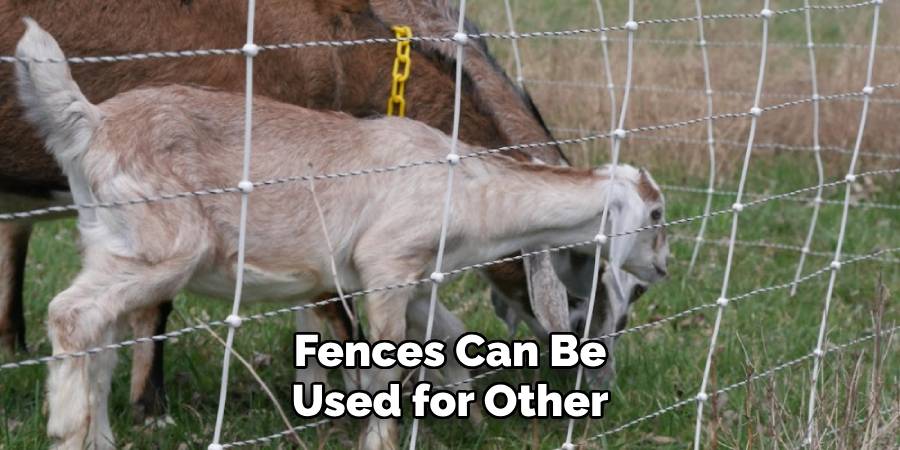
Yes, electric fences can be used for other types of livestock, such as cattle, sheep, and goats. However, it is crucial to adjust the voltage level according to the size and temperament of the animals. It is also important to properly train them to respect the fence and regularly check for any damage or malfunctions.
Conclusion
All in all, knowing how to install electric fence for horses can be a beneficial skill to have for any horse owner or caretaker. It provides a safe, cost-effective, and visually appealing fencing option for keeping horses contained within their designated area.
With proper installation and maintenance, electric fences can last for many years and provide peace of mind knowing that your horses are secure and well-protected. So, consider installing an electric fence for your horses and enjoy the many benefits it has to offer. Happy fencing! Stay safe, and keep riding!
About
Outdoor Fixes is a distinguished figure in the world of Diy design, with a decade of expertise creating innovative and sustainable Diy solutions.
His professional focus lies in merging traditional craftsmanship with modern manufacturing techniques,
fostering designs that are both practical and environmentally conscious. As the author of diy,
outdoorfixes delves into the art and science of outdoorfixes-making, inspiring artisans and industry professionals alike.
Education RMIT University
(Melbourne, Australia) Associate Degree in Design (Outdoor Fixes) Focus on sustainable design, industry-driven projects,
and practical craftsmanship. Gained hands-on experience with traditional and digital manufacturing tools, such as CAD and CNC software.
Nottingham Trent University
(United Kingdom) Bachelor’s in outdoorfixes.com and Product Design (Honors) Specialized in product design with a focus on blending creativity with production
techniques. Participated in industry projects, working with companies like John Lewis and Vitsoe to gain real-world insights.
Publications and Impact
In diy, Outdoor Fixes his insights on indoor design processes, materials, and strategies for efficient production.
His writing bridges the gap between artisan knowledge and modern industry needs, making it a must-read for both budding designers and seasoned professionals.

